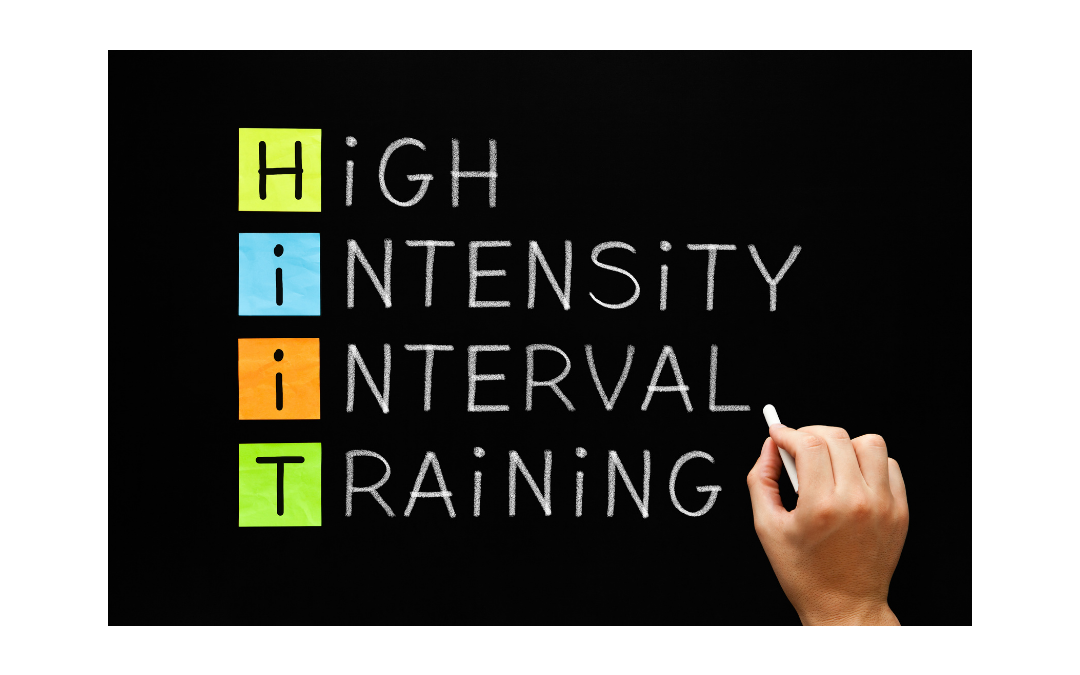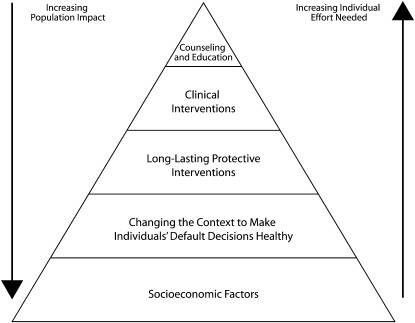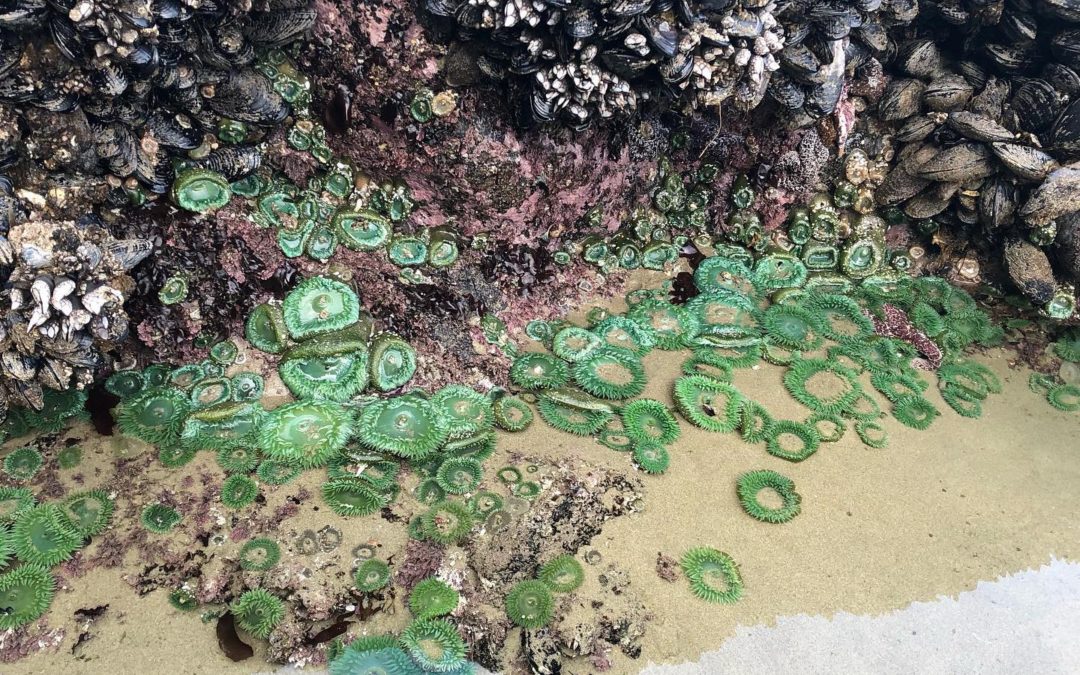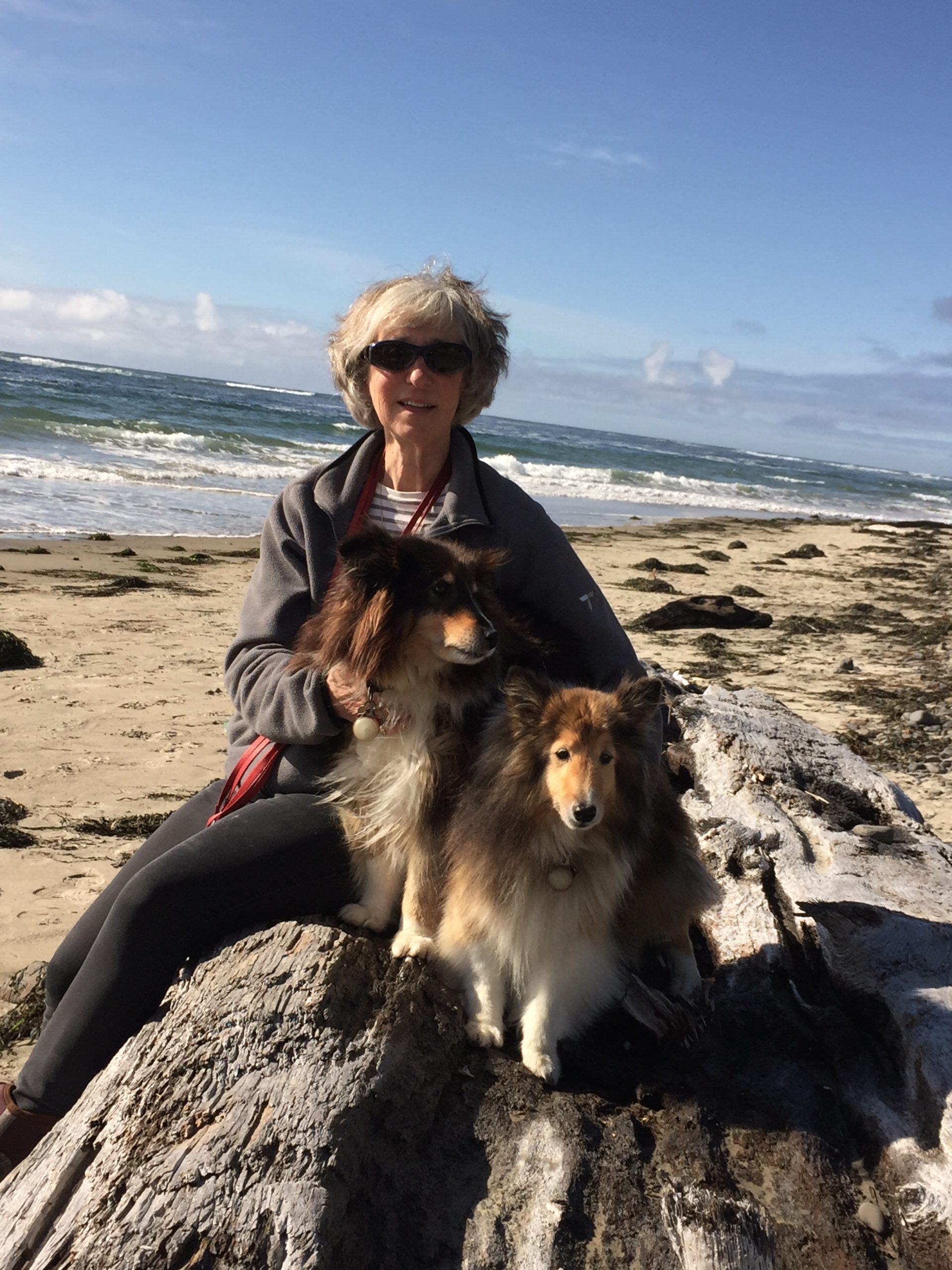
by Guest | Mar 31, 2021 | Move Well
Are you a current dedicated walker or do you want to get started on a walking program? April is a great time for walking in Tillamook County and National Walking Day, April 7 would be a good time to start a walking program.
I’m an avid walker and enjoy daily walks with my dogs at Happy Camp, but also enjoy the social interaction of walking with an organized group.
Walking is one of the easiest, least expensive, and COVID-safe ways to increase your physical activity and reap the health benefits associated with regular physical activity. Other benefits to walking include improved memory and attention, better sleep, thinking and learning, as well as boosting creativity.
If you need inspiration to begin or continue walking regularly, check out the article “Don’t Underestimate the Power of a Walk” by Deborah Grayson Riegel.
And if you need help getting started, try the “Walk with Ease” program. Through this self-directed program you will develop your own simple walking program and set your own pace! Walk with Ease is a simple fitness program free to all Oregonians developed by the National Arthritis Foundation (but open to anyone who wants to start a walking program). “Walk with Ease” is proven to: reduce pain; build confidence in being physically active; and improve overall health. Participants receive a free “Walk with Ease” guidebook and a series of six weekly emails to guide them through the program. Participants will learn how to be more physically active and to set and work towards goals. Register for this free program online here.
The self-directed “Walk with Ease” program is a great companion to the “Walk Well Tillamook County” groups coordinated by Tillamook County Wellness. These groups originally started through a grant as “Step It Up” walking groups and will relaunch for 2021 the week of May 10. Currently there are eight different volunteer led “Walk Well” groups meeting in Tillamook County, some walk one day per week and others walk on multiple days each week. Some groups walk the same route each time and others vary the walking location with groups walking in Pacific City, Tillamook, and Rockaway Beach. If there is not a group in your area, we would be happy to work with you to establish a new group – contact Nancy Kershaw for more information about starting a “Walk Well” group, nancy.kershaw@oregonstate.edu, 503-842-3433. The 2021 launch of “Walk Well” groups will begin with a county-wide walk in the Pacific City area on Mother’s Day. Watch for more information.
If you’re looking for places to walk or hike check out the Tillamook County Wellness Move Well webpage and click on the link on the left side “Great Places to Get Moving.” And coming soon there will be a new link on the “Visit Tillamook Coast” webpage developed through a partnership with Visit Tillamook Coast, US Forest Service and Tillamook County Wellness Access to Physical Activity. This new webpage will offer a searchable map of all the trails and recreational sites across Tillamook County with details such as the available amenities and facilities at each location, the difficulty and type of trail, and helpful photos for someone who maybe hasn’t visited a certain location before. For more information, check out this story map about the project, and keep an eye out for the launch of the webpage later this spring – just in time to enjoy a beautiful summer in Tillamook County!
AUTHOR: Nancy Kershaw, Oregon State University Extension Service
For more local health and wellness information, follow Tillamook County Wellness on Facebook, Instagram and Twitter.

by Guest | Feb 9, 2021 | Move Well
Time. There never seems to be enough of it for what we need and want to do each day. What if I told you that you can get twice the workout in half the time? If it sounds too good to be true, then you haven’t heard about High Intensity Interval Training, or HIIT. Getting 30 or 60 minutes of exercise into each day means letting go of other priorities (like sleep, family time and leisure). If we do carve out time in our schedules to exercise, we often struggle to stay motivated to get in a full bout of vigorous activity. It’s not surprising. Our brains are wired to help us avoid suffering!
The trick is to trick the mind into looking forward to physical activity. This can be done by choosing exercise routines we enjoy (dance, hiking, etc.) but also by strategically engineering our workouts to get the biggest return from the shortest amount of time. Knowing we can swap an hour-long slog of a workout with a mentally manageable 20-minute workout can be the difference between frustration and success.
As noted in this article from the American Council on Exercise, one of the most common misperceptions about exercise is that a person has to spend hours sweating buckets in order to reap the benefits. We all know those marathon runners who really do sweat buckets to stay so fit but most of us just want to get into a routine that helps us look and feel better and improve our health in the process. HIIT is just the ticket.
What is HIIT?
HIIT involves alternating higher-intensity activity with intervals of lower-intensity activity. The idea is to get your heart rate up for a short period of time (work phase) and then slow down for a short period of time (recover phase). Intervals can be 1:1, 1:2, or 1:3. For example, you can alternate jogging for 1-minute and walking for 1-minute (1:1), jog 1-minute and walk 2-minutes (1:2) or run 15 seconds and walk 45 seconds (1:3). The key is to start with a cycle that you know you can stick with and build from. For a beginner, that could be as little as 4 minutes of brisk walking or jumping jacks for 15 seconds, followed by 45 seconds marching in place.
Cycling through intervals for as little as 10 minutes can provide similar benefits of a 30-minute sustained activity depending on the intensity levels. A good way to measure exercise intensity is by using a rate of perceived exertion (RPE), with 1 being very low intensity and 10 being the highest level of intensity you can manage. An effective workout should have at least a 5-minute warm-up, a minimum of five high-intensity work intervals and a cool down. As a general rule, the warm-up would be around a 3-4 RPE, with work phase between 8-10 RPE and rest/recovery phase around 5-6 RPE.
There are many benefits to HIIT training, including improved heart health and better endurance, but one of the most important benefits is psychological. HIIT workouts are both physiologically and psychologically easier. Building rest breaks into a short workout make it much easier to begin and stick with a regular exercise habit.
HIIT examples
- Walking or jogging as fast as you can and then walking at a leisurely pace
- Calisthenics – alternating short bouts of jumping jacks, push-ups, squats and lunges with marching in place
- Swimming one lap as fast as possible with a recovery lap in between
- Select the Interval Training or Hill Climb option for Treadmill, Elliptical or Rowing machines
- Set up a dance play list with alternating fast and slow songs
HIIT can be safe and effective at any age or fitness level. To learn more about how high-intensity interval training can even be more effective for older adults, read this article from the Mayo Clinic. If you have health concerns, be sure to check with your doctor before starting a new exercise routine.
AUTHOR: Michelle Jenck, Adventist Health Tillamook Director of Community Wellbeing and TCW Coordinator
For more local health and wellness information, follow Tillamook County Wellness on Facebook, Instagram and Twitter.

by Michelle | Dec 23, 2020 | Being Well, Move Well, Work Well
Much love has been poured out in recent months; people supporting local businesses, delivering food boxes and reaching out to others. As we step into a new year, we are reminded that we need to show love to ourselves as well. One way we can do that is by taking steps to care for our own mind, body and spirit at the most fundamental levels.
A friend recently shared a story about her visit with someone who had been struggling mentally, emotionally and physically. When asked to explore what he was really missing and needed more than anything else to get better, it came down to three things: Restoration, Hope and Progress. What this man discovered is truly at the core of what each one of us needs to be well.
Restoration – Our bodies have a built-in mechanism for that. It’s called sleep. If you’ve ever been to Disneyland, it’s amazing to see how clean the park is. Despite thousands of people, including children with ice cream cones, overtaking the park each day, it looks immaculate. For that to happen, a whole crew works all night long to make it look perfect for each new day. Believe it or not, you have a whole Disneyland crew working in your body while you sleep, making necessary repairs, sprucing things up and even helping you retain what you learned during the previous day. We need to give that crew eight hours of quality time each night to get that job done. Setting a regular bedtime, and sticking closely to it on weekends, is important for restoration.
Hope – Remember the TV show, Cheers? Or how about Friends or The Big Bang Theory? What each of these has in common is a sense of belonging among the show’s characters. It sounds cliché but it really is true that sometimes you want to go where everybody knows your name. That’s because having a sense of connection with others is vital to our well-being. Belonging to a faith community, support group or fitness class is a great way to build connection; as is joining a club with a shared interest, be it quilting, books, dungeons or dragons. Just getting together regularly with a friend for coffee can fill this need. Even in our current, virtual world, there are ways to gather and share a common experience.
Progress – To move forward. To have a sense of accomplishment is critical for our well-being. The two most important ingredients for making progress are what we eat and how we move. Wait, what? It’s true. Because food and activity are how we derive our energy, these are the two most fundamental things we need to progress toward any goal. Making small steps to our daily habits is progress in and of itself. When we eat healthier foods and exercise regularly, we have more energy, think more clearly, and are more productive.
As you ease into 2021, what small changes will you make to bring Restoration, Hope and Progress into your life?

by Michelle | Sep 18, 2020 | Move Well
Two-for-one sales are always popular. We get twice as much for the cost of one. What if we can get a three-for-one deal? Wouldn’t that be awesome? In healthcare, this is referred to as the “Triple Aim.” Developed by the Institute for Healthcare Improvement, this framework sets a goal of improving population health, as well as quality of individual care, while at the same time reducing healthcare costs.
It may sound too good to be true, but great strides are being made to accomplish the Triple Aim. This isn’t just a good idea. It is necessary, given escalating rates of preventable illness and healthcare costs. Because the factors that influence health extend beyond the healthcare system, other sectors must become part of the “Triple Aim” solution. Government, schools, businesses, faith-based and civic organizations are just some of the partners that can help.
The Centers for Disease Control and Prevention (CDC) has developed the Health Impact Pyramid, a resource that helps communities understand how to get the best return on investment when working to improve population health. Traditionally, most of the time and money invested in helping people get or stay healthy happened at the top of the pyramid in the form of counseling, education and clinical interventions. While these are important strategies, they require more individual effort and often do not fully address the underlying, root causes affecting individual health.
Research has shown that investments in factors that influence a person’s education, employment and housing status, known as socioeconomic factors, can achieve a much higher rate of return. For example, community investment in early childhood development and care impact a child’s success in school and this will likely lead to a better job down the road. Education and employment status are associated with better health in adulthood.
The second level of the pyramid relates to making default choices healthier where people live, work and play. If we live close to a store that sells fruits and vegetables, we tend to eat more of those foods than someone who must travel a long distance to purchase them. Similarly, conveniently located sidewalks, bike lanes and trails make being active easier. Research shows that people who live in walkable communities are more active and healthier.
Continuous, paved pathways provide safe, accessible opportunities for all citizens to become more physically active. Currently, there are few places like this in Tillamook County. Kilchis Point Reserve, near Bay City, is a popular trail. Another good example is Bud’s Fitness Trail at Tillamook Junior High School. These paths allow people of all abilities to enjoy being active outdoors and accommodate strollers, walkers and wheelchairs. These off-road paths, such as the planned Crosstown Connections rail spur between Goodspeed Park & Hoquarton Slough, allow families with small children to recreate safely, even allowing a young child to skate, ride a bicycle or scooter – all important activities for physical development and social connectivity.
These paths are free to the public and open year-round. The return on investment comes from the increased health and community livability these resources provide. Development of the proposed Salmonberry Rail Trail within our coastal communities stands to not only generate significant economic development but also positive community health benefits.
By visiting a local recreational area, you can check off a square on your Explore Your Outdoors BINGO card to enter to win a prize. Cards are available on-line at https://tillamookcountywellness.org/move-well/great-places-to-get-moving/ or can be picked up at NCRD, the Y and Inn at Cape Kiwanda. You won’t want to miss out – the adventure ends September 25th!
For more local health and wellness information, follow Tillamook County Wellness on Facebook, Instagram and Twitter.
Author: Michelle Jenck, TC Wellness Coordinator

by Guest | Sep 17, 2020 | Move Well
One thing is for sure. And that is . . . nothing is for sure. We must be prepared for unexpected challenges. With all the natural beauty we are surrounded by, we are also more likely to experience Mother Nature’s fickle (or fiery) side as well. In our region, this could be an earthquake, tsunami, flood or fire.
Staying connected to accurate information and to each other is critical during times like this. Between the COVID-19 pandemic, recent wildfires and other challenges, day-to-day life can start to feel unmanageable. The more equipped we feel to access the best information, the better we can respond in a crisis. And while word of mouth and social media information travel very fast in our rural community, it’s a good idea to have trusted sources of accurate information to rely on.
Advance planning and communication can make a big difference in the heat of the moment. Here are a few information sources that can help you plan.
- Follow, or consider joining, local emergency preparedness organizations.
In North County – Emergency Volunteer Corps of Nehalem Bay: https://evcnb.org/
In South County – South County Emergency Volunteer Corps: https://southcountyevc.org/
In Central County – https://www.readynw.com/ edward@readynorthwest.com at https://www.readynw.com/
- Public Safety Alerts: If you haven’t already, it’s a good idea to sign up for public safety alerts from both Nixle and Tillamook 911. These keep you up-to-date with relevant information on issues such as road closures, traffic accidents and extreme weather events. Alerts in Spanish or English are received as a text message on your mobile device or for the latest updates you can log onto their website: https://local.nixle.com/tillamook-county-emergency-management/.
A similar service is available through Tillamook County 911 with alerts via text and or phone. You can sign up at http://www.tillamook911.com/.
Where do you get your information? If it is from somewhere not listed here, we’d like to hear about it. Our coalition and community partners are working hard to make it easier to get and share information during a crisis. Please email us at info@tillamookcountywellness.org and tell us your preferred way of getting up-to-date information that matters most to you.
AUTHOR: Michelle Jenck, Tillamook County Wellness Coordinator
For more local health and wellness information, follow Tillamook County Wellness on Facebook, Instagram and Twitter.

by Guest | Sep 10, 2020 | Move Well
Oregon’s coastline is amazingly beautiful. Many of our beaches are home to rocky intertidal habitats. These are rocky areas located at the edge of the ocean between the high and low tides. What makes rocky intertidal areas so interesting to explore are tide pools! A tide pool is a shallow pool of water left in low places along the shoreline. These pools are visible when the tide is low and covered with water when the tide is high. Many plants and animals live in tide pools which are found all around the world. Wherever there’s a rocky seashore, there are tide pools. Including here in Tillamook County!
Life in tide pools is dynamic and amazing. When you venture out to the rocky shore, look for layers of habitats. Check out the life living at the edge of the sand and then scan your eyes up along the rocks. The first thing you may notice is how much life is living in these areas! The rich diversity that can be found is astounding. Next, you will notice that the community of animals and plants change as you move from the wet, low areas to the higher (and drier) ones. The intertidal area is divided into different regions: the splash zone, high tide zone, mid tide zone, and low tide zone. Animals and plants living in the splash zone only need a spray of water to survive. Here you will find tiny acorn barnacles, limpets, and snails. This is the opposite of the low tide zone, a place that is typically under water except during the lowest tides. In these locations, you will find different algaes, sea slugs, sponges, and more. Maybe the most obvious break is between the low-tide zone and the mid-tide zone. The mid-tide zone is home to mussels, and there is a clear line that forms here. Mussel habitat is bound by the high tide zone, which is too dry, and the range of sea stars(a major predator) in the low tide zone.
When visiting the beach and tide pools, follow these easy steps to keep you, your group, and the plants and animals in these areas safe.
Know where to go! Do a little research to find out which beaches offer the best tide pools for your group. Not all tide pool areas are easy to get to. Some locations have tide pools in areas that get cut off as the water rises and starts to flood the beach during high tide. This can create a dangerous situation for you and your group.
Know when to go! Go during a nice low tide. When I go out with my family or take out groups to learn more about tide pools, I aim for 1 to 2 hours before the predicted negative low tide (-0.8 feet or lower). Check a tide book or use any of a number of great online tools to find out when the tide will be low on your favorite beach. Every location is different, but the lower the tide the better the experience. The best times to tide pool usually occur in the late spring and summer months.
Keep an eye on the ocean! Even when the tide is predicted to be very low, many things can change the water level on the beach. Local and offshore weather can affect how flooded the beach is. At any time, large waves can surprise you on the beach. Always face the ocean and watch out for sneaker waves.
Watch your step! Step carefully when exploring. The rocks are full of living plants and animals. Walk on bare sand or rocks when investigating the tide pools. Remember to protect yourself while exploring. Avoid bare feet, flips flops or shoes that easily come off. Opt for something sturdy with a closed toe and good tread. Remember, your feet will likely get wet.
Be gentle! I encourage people to explore and feel the tide pools but to touch gently using 1 or 2 fingers. Never poke or try to pull animals off the rock. This may hurt or kill the animal. Some animals are territorial and a rival may not be welcoming if you move them to a new pool.
A great way to learn more is to hook up with a local organization or agency. Explore Nature partners (like us – Friends of Netarts Bay WEBS) and Oregon State Parks offer great opportunities to learn about life in the rocky intertidal and how to safely explore. Audubon Society of Lincoln City (ASLC) and the North Coast Rocky Habitat Coalition (NCRHC) work to identify and conserve sensitive rocky shore areas for future generations. These groups offer great ways to discover more about the wonders of Oregon’s rocky shores! * alternate below
Animals and plants living in our tide pools have many interesting adaptations that help them survive. From strategies to help them not dry out to avoiding predators, the more you discover the more fascinating it gets! Explore, learn and take care of these special places.
There are many great print and online resources. Checkout a book from the library or any of these recommended sites:
AUTHOR: Chrissy Smith, Director of Friends of Netarts Bay – Watershed, Estuary, Beach, and Sea (WEBS)
Photo Source: WEBS
For more local health and wellness information, follow Tillamook County Wellness on Facebook, Instagram and Twitter.







